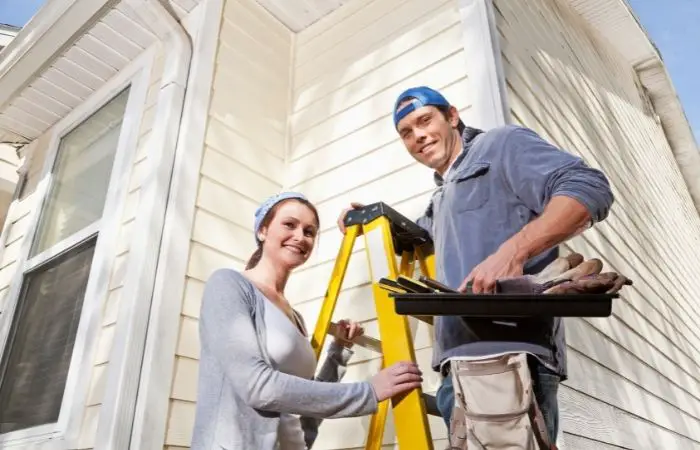The home inspection is one of the most important steps in closing on your new home. Home inspections are designed to let homeowners know of any damage that has occurred to their home or that may occur in the future. It is also an opportunity for you to renegotiate the terms of your purchase contract by adding items into the contract for repair at no cost to you. Home inspections are not just about identifying problems; it’s also about value and peace of mind, so here are eight things you should regularly check:
1. Roof
The roof is one of the most important parts of your home, so it’s important to check it regularly for damage. Look for missing or broken shingles, water stains, and any other signs of damage. If you find any damage, have it repaired as soon as possible. Also check to see if your roof needs a new layer of shingles, as it is one of the most expensive repairs you have to make when purchasing a home.
While checking your roof, check your gutters and downspouts. Clogs in your gutter can damage the foundation of your home as well as cause water damage to surrounding areas. Keep in mind that you’re responsible for the exterior of your home and its maintenance, so be sure to keep it in good condition.
2. Floors
When buying a new house, checking the floors is an important step that many people forget about in their excitement. You should be checking your floors for any signs that they are sagging or separating from the walls because this damage is irreversible and very expensive to have repaired. It’s also important to check for water damage since water can warp wooden floorboards or rust steel ones.
Furthermore, check to see if any of your floorboards are loose or missing, as this can lead to large sections of your home being noticeably uneven.
3. Bathroom
The bathroom can be one of the most dangerous rooms in your home as it contains several hazards such as slippery floors and exposed hot water heaters. If you have a tile or stone floor surface, check for any cracks that might lead to slipping while you are bathing. If your bathroom includes a vintage bathtub with feet, check to see if there are any signs of rust or damage, as these old bathtubs can be very expensive to repair. Another thing you should check is the condition of your toilet and whether any of your toilet components need to be repaired or replaced. Often toilet leaking from tank bolts occurs, so it’s important to have them inspected. This is an issue that you can fix relatively cheaply.
4. Crawl space
An area under the house that’s covered by lattice or plywood is called a crawl space. Make sure it’s properly insulated with vapor barriers, but cut holes in the barriers if you have pipes running through there so they don’t freeze during cold weather. Check the floor for signs of sagging or rotting, which can damage your home foundation. This is especially important if you live in an area where there’s heavy snowfall or lots of rainfall throughout the year because water can seep through cracks in concrete flooring and erode the foundation.
Look for signs such as cracks or warping. This could be a sign that your foundation is damaged and you should contact a professional to take a closer look.
5. Foundation
Make sure the foundation is free of cracks, holes, or other damage. Damage in this area can be expensive to repair so it’s best to call in a professional if you find any issues with the foundation. Foundation damage is one of the most dangerous issues to ignore because it can lead to bigger problems, such as sinkholes.
Sinkholes are particularly dangerous because they can appear without warning and swallow the entire house in one go. If you notice any signs of warping or cracks in your foundation or flooring, contact a home inspector immediately.
6. Electrical system
Check all of the electrical appliances throughout your home are working properly and there aren’t any loose wires hanging around. If an appliance isn’t operating correctly, replace it immediately because it can become a fire hazard over time. Make sure all of the outlets have covers on them so young children don’t stick items inside them.
Electricians can be costly since there are so many different components to check, but this is one of the most important jobs to be done in your home because electricity is extremely dangerous. If you don’t feel like testing all of the outlets in your home yourself, hire someone who knows what they’re doing.
7. Garage
Make sure the floor in your garage isn’t soft or sagging. If it is, you can add supports underneath to help strengthen it. Problems in the garage can become problems for your car, such as tires getting stuck in soft spots. Another thing to check is the hanging height of your garage door opener and whether all the cables are in good condition and working properly.
Garages require constant maintenance since they are used so often. Items are constantly being dragged in and out of the garage, which can cause damage to doors, floors, electrical systems, walls, etc. If you have a garage door opener that’s more than 10 years old, consider replacing it with a new one because they stop working after several years for many different reasons.
8. Exterior
Check the exterior of your home for any damage such as peeling paint, cracks, holes, and signs of termites. These issues are often overlooked, but they can become a serious problem if you don’t deal with them in time. Termites are commonly found in warmer climates, but they can still appear in colder regions if there are certain types of trees near your home.
A home inspection is an important process to routinely go through in order to identify any potential problems with your home. Many of these issues can be fixed relatively cheaply, but others, such as foundation damage, can be more expensive. It’s always better to catch these problems early on so they don’t become bigger and more expensive to fix down the road. Have you performed a home inspection recently? If not, what are some things you’re going to check during your next one?




